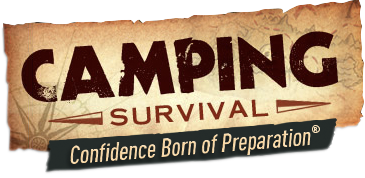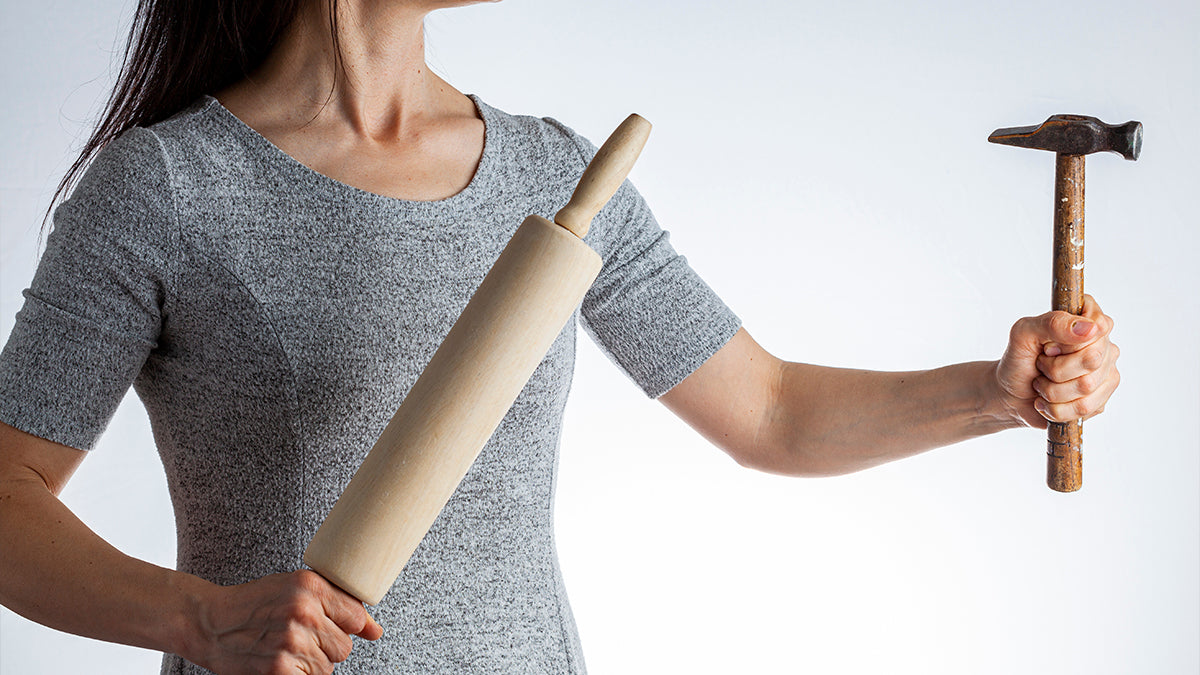Imagine this: You've just stepped outside to check on your emergency supplies in the wake of a city-wide blackout. The streets are tense with desperation.
Suddenly, a shadow darts towards you—a looter after your provisions. Your pulse quickens. With no weapon on hand, you’re equipped with only the heavy flashlight from your kit. Stand firm, flashlight ready. Will it be enough? What do you do?
Understanding Improvised Weaponry: The Key to Self-Defense
In an emergency, conventional arms may not always be within reach as threats emerge. In these scenarios, you must learn to use what you have on hand to defend yourself and your people.
EMBRACING AWARENESS
Before worrying about your weaponry, you should first evaluate your level of awareness. Recognizing potential threats and avoiding dangerous situations is always the best defense. However, if faced with an unavoidable threat, knowing how to use your surroundings to your advantage can be a lifesaver.
IDENTIFYING POTENTIAL WEAPONS
Everyday items like pens, keys, or even magazines can be transformed into effective self-defense tools. The trick is to look at objects not for what they are, but for what they can do. For instance, a pen can be a stabbing tool and a heavy book can serve as a blunt object.
[RELATED READ: 10 Places to Conceal Your Knife]
Practical Self-Defense Techniques with Common Items
Let’s break down how common items can be used for self-defense:
PENS OR KEYS
Stabbing Instruments – A pen or key can be held tightly to stab an assailant. The goal is to target vulnerable spots like the eyes or throat.
Pressure Points – Use these items to press against sensitive areas, like the wrist or neck, to incapacitate the attacker temporarily.

MAGAZINES AND NEWSPAPERS
Blunt Force – Roll a magazine tightly to create a hard, stick-like object. This can be used to strike an attacker, aiming for sensitive areas like the nose or temples.
Blocking Tool – A magazine can also be used to block incoming strikes, especially knife attacks.
BELTS
Whipping Weapon – A belt can be used to whip or entangle an attacker. This is especially useful when you’re trying to keep your distance.
SMARTPHONES
Distraction – Throw your phone to create a distraction, allowing you a moment to escape or prepare for defense.
Blunt Object – In a case, a phone can be used as a hard object to strike with.
UMBRELLAS
Spear Technique – An umbrella, especially one with a pointed tip, can be used like a spear to jab at an attacker. This can help maintain distance and target vulnerable spots.
Shielding Device – Open the umbrella to create a barrier between you and your attacker, which can disorient them or block their vision, providing you an opportunity to escape.
FLASHLIGHTS
Blinding Light – A high-powered flashlight can be used to temporarily blind or disorient an attacker, especially in low-light conditions.
Impact Tool – A sturdy flashlight can serve as a baton for striking. Aim for the attacker's vulnerable areas, such as the sides of the head or knees.
Stance and Preparation for Self-Defense with a Weapon
- Positioning: Stand with your feet shoulder-width apart, ensuring a stable and balanced posture. This stance provides a strong foundation, making it easier to move quickly and respond to an attacker's movements.
- Facing the Attacker: Always keep your eyes on the attacker, maintaining direct eye contact. This not only helps in gauging their next move, but also demonstrates your readiness and confidence, which can be intimidating to the assailant.
- Weapon Readiness: Hold your improvised weapon firmly. Your arms should be slightly bent at the elbows, keeping the weapon ready to use at a moment's notice. Ensure the weapon is in a position that allows for both defensive and offensive maneuvers.
- Mindset and Focus: Clear your mind and focus on the situation at hand. Being mentally prepared is just as crucial as being physically prepared. Stay calm, assess your surroundings for escape routes, and be aware of any obstacles that could hinder your movement or defense.
- Surprise Element: Use the element of surprise to your advantage. If an attacker is unaware of your weapon or your willingness to defend yourself, you can use this to gain an upper hand. A sudden, unexpected move can disorient your attacker, giving you a critical moment to strike or flee.
- Striking with Force and Precision: If you must strike, aim for vulnerable points on the attacker's body such as the eyes, nose, throat, or knees. Your strikes should be forceful and precise, aimed at incapacitating the attacker quickly and effectively.
- Continuous Assessment: As the situation unfolds, continuously assess the attacker's movements and reactions. Be ready to adjust your stance, grip, or strategy based on their actions. Flexibility in response can be key to successfully defending yourself.
- Use of Verbal Commands: Sometimes, using a firm and loud voice to command the attacker to back off can be effective. Verbal assertion can deter an attack, especially if it attracts attention from bystanders who can offer help.
- Escape Strategy: Always keep an escape strategy in mind. If an opportunity to flee presents itself, take it. The primary goal in any self-defense situation is to ensure your safety, which usually means escaping rather than engaging in prolonged combat.
- Aftermath Preparedness: Be prepared for the aftermath of a confrontation. This includes dealing with any injuries, contacting authorities, and possibly providing a statement about the incident. Remember to preserve any evidence if the situation escalates to legal proceedings.
[RELATED READS: Urban Preparedness Techniques]

Striking Techniques
Aim for Vulnerable Areas – Eyes, throat, nose, and knees are key targets.
Quick Strikes – Be fast and aggressive. The goal is to incapacitate the attacker long enough for you to escape.
Legal Considerations and Ethical Use of Force
UNDERSTANDING SELF-DEFENSE LAWS
It’s crucial to be aware of the legal implications of using improvised weapons. In many jurisdictions, the use of force is only justified when there is an imminent threat to one’s life or severe bodily harm.
ETHICAL RESPONSIBILITY
The primary goal of self-defense is to escape harm, not engage in combat. Use the minimum force necessary to ensure your safety.
Self-defense is not just about physical techniques; it’s about mindset, awareness, and the ability to adapt. By understanding the potential of improvised weaponry and practicing the principles of self-defense, you’ll equip yourself with valuable skills that can make all the difference in a dangerous situation.
Remember, the best fight is the one that’s never fought. Stay safe, stay aware, and stay prepared.


1 comment
Great information. Thanks